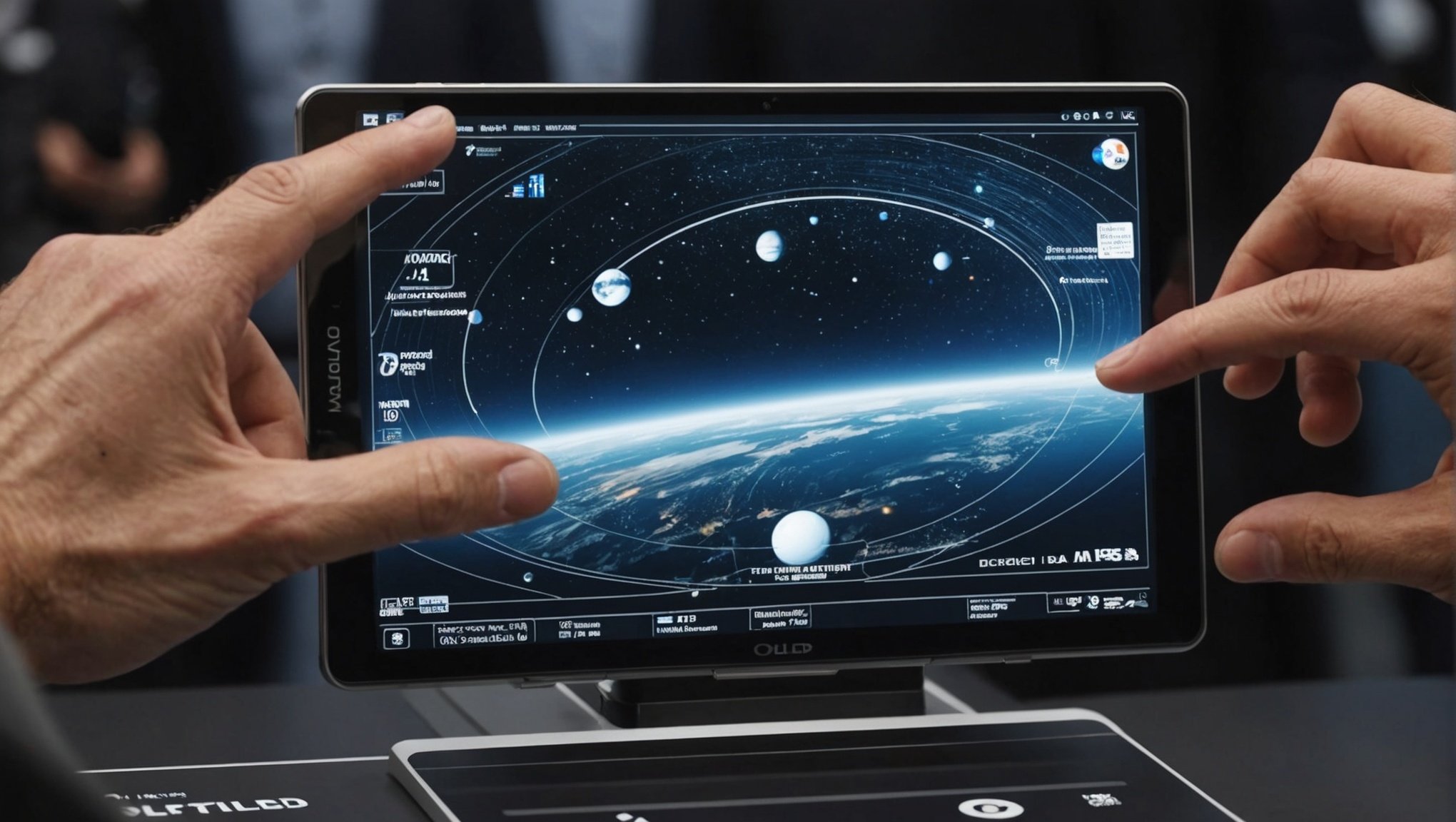Overview of OLED Technology Advancements
OLED technology, which stands for Organic Light Emitting Diode, has revolutionised display innovations since its inception. Born from the need for improved image quality and flexible displays, OLED technology developments have redefined what is possible in electronic displays. Initially, OLEDs gained attention for their ability to emit light without a separate backlight, resulting in thinner screens and richer contrast ratios, enhancing display quality.
Over the years, numerous advancements in OLED technology have emerged. Recent innovations focus on energy efficiency, lifespan, and resolution enhancements. Manufacturers are now producing OLED displays capable of delivering more vibrant colours and deeper blacks, providing a viewing experience previously unmatched by older technologies. These display innovations are particularly significant in the context of enhanced display quality, as they offer superior visual performance, with improvements in colour accuracy and viewing angles.
Have you seen this : Unlocking the Power of Blockchain: Transforming Multi-Party Transactions in Supply Chain Management
The impact of these advancements is profound. Not only do they cater to the demand for better screens in smartphones, televisions, and wearables, but they also pave the way for future technology applications, such as rollable and foldable displays, enhancing both functionality and display innovations.
Key Improvements in Display Quality
Over recent years, advancements in display quality have notably improved consumer electronics. While improvements in color accuracy, contrast, and brightness might seem technical, they significantly impact everyday use.
Have you seen this : Master your online security with a smart password generator
Color Accuracy Enhancements
Enhancements in color accuracy ensure that screens replicate colors closer to real life. This precision is crucial for photographers, designers, and anyone who values authentic image representation. Improved color technology means users can now expect visuals that more accurately reflect original intentions.
Contrast Ratio Improvements
The contrast ratio—the ratio between the darkest black and the whitest white on a display—has seen major improvements. Enhanced contrast ratios allow for clearer distinctions, especially in varied lighting conditions. Whether in a dimly lit room or bright outdoor setting, improved contrast ensures that images remain vivid and distinct.
Increased Brightness and Dynamic Range
Higher brightness levels and an expanded dynamic range are pivotal for content visibility in bright environments. Enhanced brightness ensures that displays can be comfortably viewed outdoors or in well-lit areas. This means that reading an e-book by the pool or sharing photos at a sunny café can be a more seamless and enjoyable experience.
Together, these key advancements are reshaping how we interact with our screens, optimizing them for every environment and enhancing our visual experiences.
Comparative Analysis: OLED vs. Other Display Technologies
To understand how OLED stacks up against competing technologies, we need to explore its contrast with LCD and Mini-LED.
OLED vs. LCD
When comparing OLED to LCD, the most notable advantage of OLED is its self-emissive pixels which allow for true blacks and vibrant colors, offering superior contrast ratios. LCDs, on the other hand, rely on backlighting, which can lead to light bleed and less intense black levels.
Despite these advantages, OLED panels typically have a higher cost and potential burn-in risks compared to their LCD counterparts. However, they continue to gain popularity due to their unbeatable display quality.
OLED vs. Mini-LED
In the OLED versus Mini-LED battle, OLED displays dominate in terms of contrast and viewing angles. Mini-LED aims to improve the backlighting of LCDs with thousands of tiny LEDs, giving it better local dimming and brightness control compared to standard LCD panels.
Yet, OLED’s ability to turn off individual pixels still affords it a greater edge in achieving deep blacks and vivid images.
Market Positioning of OLED Technology
Currently, OLED is regarded as a premium technology, preferred among consumers valuing unparalleled visual quality. As more manufacturers adopt OLED in smartphones and televisions, its market presence and consumer demand consistently grow.
Applications of Advancements in OLED Technology
The OLED technology has become a cornerstone in consumer electronics, particularly evident in smart devices like smartphones and televisions. The superior colour gamut and deep blacks of OLED displays have enhanced the visual experience for users, making it highly sought after in these devices.
Its flexibility and thin design also open doors to exciting opportunities in wearable technology and other emerging devices. Imagine smartwatches with screens that mould to your wrist or foldable displays that fit snugly into pockets. Such innovative applications could redefine the way consumers interact with technology.
Beyond consumer gadgets, OLED’s vibrancy and reduced power consumption are pushing its adoption in industries like gaming and digital signage. In gaming, OLED screens provide smoother transitions and more lifelike graphics, crucial for immersive gameplay. Similarly, digital signage benefits from OLED’s ability to deliver bright, eye-catching content that can be comfortably viewed even under direct sunlight.
In many smart devices and industry applications, these benefits highlight OLED technology’s transformative impact. As research continues, we can expect further integration of OLED technology into broader industry applications, hinting at a future rich with possibilities and improvements.
Insights from Industry Experts and Research Studies
Delving into the OLED technology industry unveils a tapestry of insights provided by experts and comprehensive research findings. As the curiosity around OLED advancements grows, these insights serve as guiding beacons.
Expert Interviews
Imagine an insightful conversation with leading figures in the industry. These individuals assert that OLED technology is not merely evolving; it is rapidly transforming the display landscape. Experts emphasize longevity and energy efficiency as critical aspects of OLED’s allure, while also addressing challenges like production costs.
Recent Research Studies
In recent studies, researchers focus on analyzing OLED performance. Key findings highlight significant improvements in luminance and color accuracy, relevant metrics for display quality. An impressive reduction in power consumption further underscores OLED’s potential as an eco-friendly option, offering users an expanded viewing experience with minimal environmental impact.
Future Projections for OLED Technology
Future projections are illuminating, suggesting OLED technology has ample room for growth. Predictions underscore potential advancements such as flexible and foldable screens, enhancing versatility in future devices. Industry experts anticipate OLED technology leading the way toward a more visually dynamic world, fostering innovation across multiple sectors.
Visuals and Data Representation
Understanding the advancements in OLED technology hinges significantly on the effective use of data charts and visual aids. These tools play a vital role in making complex information accessible, allowing consumers to comprehend OLED performance metrics with clarity.
For instance, data charts can vividly portray the energy efficiency improvements in newer OLED models. By illustrating technical specifications such as luminance levels and colour accuracy, these visuals enable users to decipher the intricate details of OLED technology without wading through dense jargon.
Visual aids are especially effective in comparing performance metrics such as contrast ratios and refresh rates across different OLED models. These comparisons help consumers identify which specifications align best with their personal preferences or needs.
Moreover, a consumer’s understanding is significantly enhanced when technical specifications are broken down using relatable scenarios. For example, showcasing how an OLED’s high refresh rate benefits fast-paced gaming can make this specification more tangible and meaningful to potential buyers.
Overall, the strategic use of visuals not only demystifies the technical aspects of OLEDs but also empowers consumers, encouraging them to make more informed and confident decisions about their purchases.











